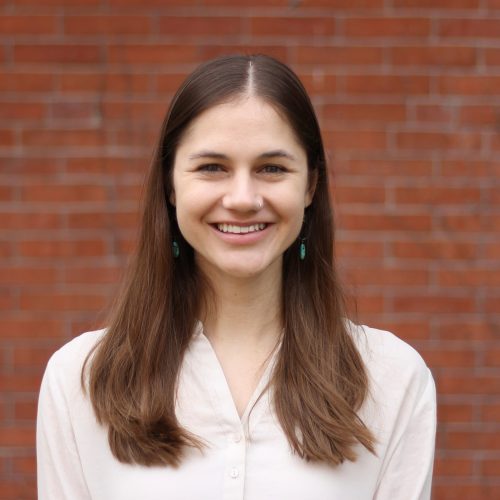Allied Against Addiction: Lessons from the HEALing Communities Study.

Allied Against Addiction: Lessons from the HEALing Communities Study
Dacia Beard and Michael Stein share lessons learned over the course of the HEALing Communities Study about how to successfully implement locally tailored communications campaigns to promote treatment and prevention of opioid addiction.
As the HEALing Communities Study (HCS)—the largest of its kind ever conducted in addiction research—draws to a close, School of Public Health researchers Dacia Beard and Michael Stein examined the three-year effort to reduce opioid overdose deaths in select communities heavily affected by the opioid crisis.
The pair are co-authors on a recent article in the Journal of Health Communication titled “Lessons Learned from Developing Tailored Community Communication Campaigns in the HEALing Communities Study.” In nine lessons, the article lays out their take-aways from the study’s efforts to develop and disseminate locally tailored messages to reduce the stigma of addiction and encourage people to seek treatment .
Funded by a $350 million grant from the National Institute on Drug Abuse as part of the Helping to End Addiction Long-term (HEAL) Initiative of the National Institutes of Health (NIH) and the Substance Abuse and Mental Health Services Administration (SAMHSA), the HEALing Communities Study partnered university researchers with 67 hard-hit communities across four states to test whether collaborative implementation of a suite of evidenced-based practices to prevent opioid misuse and treat opioid use disorder (OUD) could reduce opioid overdose deaths by a margin of 40% over three years.
The study intended to acknowledge that while proven and effective prevention methods and treatments for OUD and overdose exist, they are not widely or well-implemented, resulting in only one in five of the estimated 2.5 million people in the US with OUD receiving them.
From the 20 states that applied to participate in HCS, Kentucky, Massachusetts, New York, and Ohio were selected based on their high rates of opioid overdose-related mortality. The funding was then distributed to teams of researchers based at four sites: Boston Medical Center (BMC) in Boston; University of Kentucky in Lexington; Columbia University in New York City; and Ohio State University in Columbus.
Stein, chair and professor in the Department of Health Law, Policy and Management and co-investigator for the HCS Massachusetts (HCS-MA) site, says the Massachusetts and Kentucky teams placed an early emphasis on the importance of communications to the study, pointing out that merely offering resources would be insufficient without effective outreach. When HCS-MA received the green light on their research, Stein assumed the role of communications director for the site and hired Beard as communications project manager. The initiative formed the basis of the first lesson in their article, which recommends integrating communications into all proposed community interventions.
As part of the communication plan for HCS, Beard and her team created a package of ready-to-use materials, including flyers, posters, public service announcements, social media posts, and op-eds designed to capture the attention of the three target audiences: people with lived experience, such as individuals living with OUD and their loved ones; community leadership, such as political leaders, public health professionals, and advocates; and healthcare providers, such as doctors, nurses, and paramedics. The primary goal of these messages was to “drive demand,” says Stein. “Everything is about directing attention […] as to why you would want treatment and where you can get treatment and why treatment can save your life.”
Beard adds that while not the primary goal, the sustainability of study efforts to reduce opioid misuse and promote OUD treatment was also a major priority of the campaigns. Although the study’s implementation efforts concluded at the end of December, she hopes the messages it shared will continue to circulate in the communities that participated. Partnering with local organizations to create coalitions, enlisting skilled “communications champions,” and establishing communications committees to guide the dissemination and customization of study messages allowed researchers to not only overcome potential cultural and language barriers across communities, but also to foster longevity. In some cases, coalitions were even able to bring on board local communications vendors and obtain discounts to continue printing and posting content about local opioid addiction resources.
“Relationships were really the glue across all of this work,” Beard says, underscoring the study’s community partnerships as both its main benefit and overarching lesson. Stein agrees. The concept of a nationally organized, but community tailored project was unique, he says. “There are a bunch of national campaigns—smoking campaigns or physical activity campaigns—and there are some smaller community campaigns around nutrition, etc., but this initiative combined the best of both approaches.”
